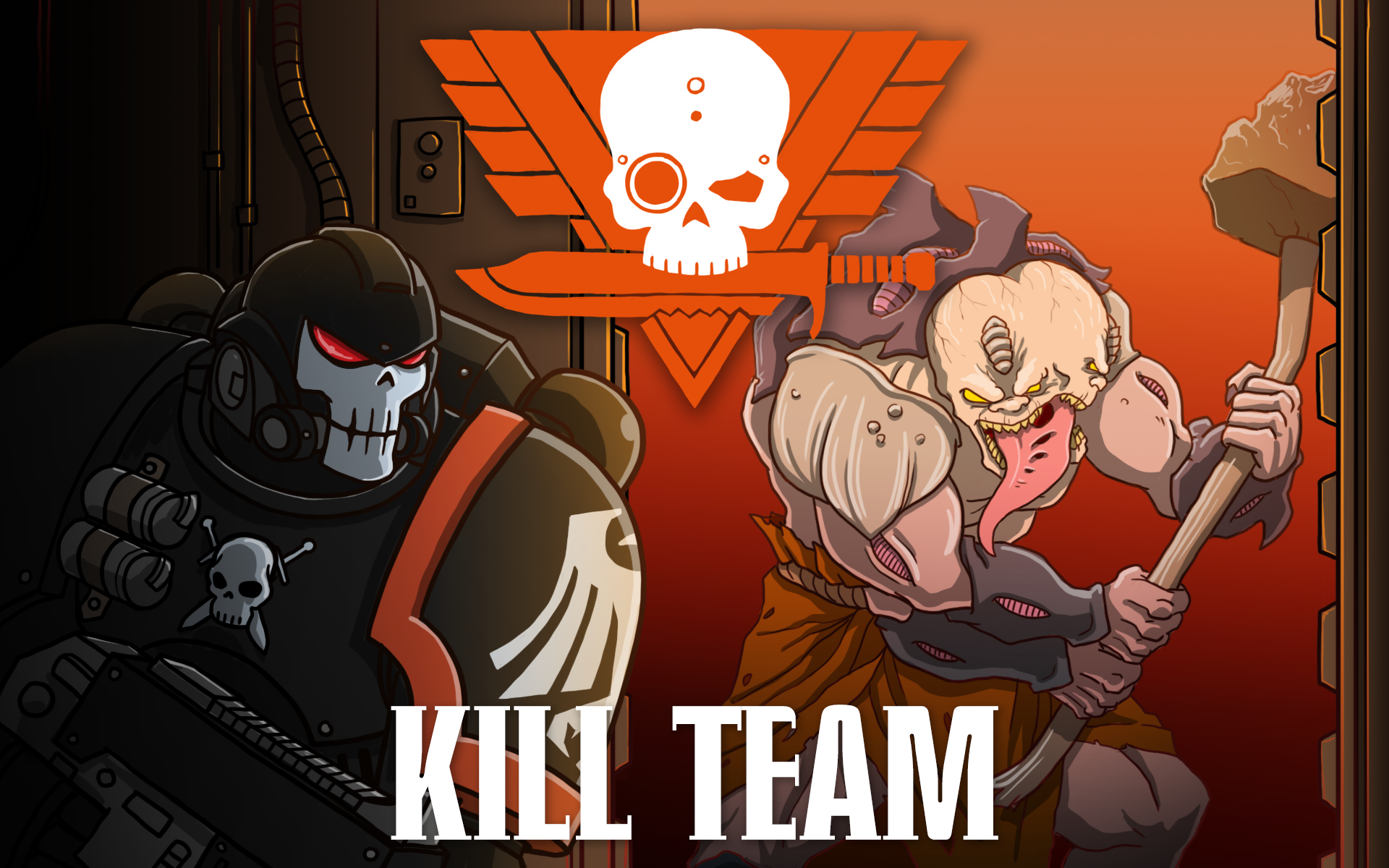Every decade theatre produces a musical seen as defining the zeitgeist, whether it’s about a group of entitled drug addicts ruining their friends attempt to get clean and murdering a dog or a young man exploiting the suicide of an acquaintance in order to try to manipulate his grieving sister into sleeping with him. I’m not criticizing musical theatre (I was particularly moved by the musical version of Silence of the Lambs) but in the grim darkness of the far future, theatre kids are still on their bullshit.
Harlequins. Where every battle is a performance visited upon an unwilling audience. The latest issue of White Dwarf – 474, gives us a brand new Harlequins Kill Team to replace the placeholder one in the Compendium. Unlike the other teams we’ve seen replaced, however Harlequins were already doing very well competitively – they have very strong melee, strong close range shooting with access to three melta pistols, 3 APL, and the ability to move as if they FLY, giving them incredible flexibility while making them hit like a truck. Harlequins rose quickly in the competitive meta following the nerfs to Custodes and as we dive into the new Void-Dancer Troup rules today, it’s worth asking if these rules make them even better.
Void-Dancer Troupe Kill Teams
Void-Dancer Troupes effectively replace the Harlequin Troupe teams in the Compendium, giving players new options and two additional models to add to their teams. Right away there’s a huge change here, and that’s wargear limitations: Void-Dancer Kill teams are limited to a single fusion pistol and neuro disruptor per kill team, significantly reducing the ranged hitting power of the team and helping balance things out. In exchange, they more than make up for this loss by being able to add Death Jesters and Shadowseers to the team, all while still carrying eight operatives.
On top of that, Void-Dancer Troup Kill Teams gain the Saedath ability, which can be a bit of a headache to understand, but hopefully we can demystify it for you.
Saedath
All Harlequin models have the Saedath ability, which is, once you understand it, really good. You start by picking an Allegory (i.e. one of five categories) for your team and a single operative to be your Pivotal Role player. This gives them a special ability called an Accolade and a type of in-game goal to achieve called a Performance. During the game as your players perform the specified action for the Performance you’ll score tallies, and once you have four, you get 1 CP, all of your operatives gain the Accolade bonus ability, and you generate an extra CP every turn. This is a huge bonus, and that’s before you actually look at the Accolades themselves.
Each operative can perform the Allegory action once, and it’s definitely possible to get four marks by Turning Point two, or even Turning Point one for some of the Allegories.
- Comedy requires you to make a Fall Back action as your Performance, and the Accolade lets you Fall Back for 1 fewer AP (to a minimum of 1).
- Epic requires you incapacitate an enemy in melee using two or fewer attack dice, and as a benefit you can treat a normal hit as a critical in melee if you didn’t roll any crits.
- Melodrama requires you down an enemy in shooting with two or more attack dice, and its Accolade lets you re-roll a dice when shooting, making it a great fit for your fusion pistol or Death Jester.
- Odyssey asks you to make a charge action and end the move within ⬟ of your opponent’s deployment zone. The Accolade lets you add
to your movement when doing Charge actions.
- Tragedy has you lose wounds from a shooting attack made by an enemy and the Accolade lets you retain a defence dice as a successful save when being shot at if you aren’t in cover (basically giving you the benefit of cover).
While you pick an Allegory at the start of the battle, you aren’t stuck with it; you can change the Allegory once per battle by using the Lead Player’s Performance Lead ability, allowing you to change it to suit circumstances.
This is a major factor, and part of why the ability is so good: You can start with an relatively easy-to-achieve category, and then switch to another with the bonus you want after you’ve already achieved your four tallies, or in order to notch the final one and get the team-wide bonus. The changed bonus can be a huge boost, and the extra CP also helps with what is a fairly CP hungry team.
Operatives
A Void-Dancer Kill Team consists of:
- 1 Lead Player, who can have a blade, caress, embrace, kiss, or power weapon, plus a fusion pistol, neuro disruptor, or shuriken pistol.
- 7 Void Dancer Troupe operatives, which can include up to one Death Jester and one Shadowseer, both of which will pretty much always be in your team, though you could just take Players if you preferred.
You have some options, particularly for Players, but note that as mentioned above you’re now limited to one each of the fusion pistol and neuro disruptor on your team. Also note that, as before, all Harlequins operatives have a 4+ invulnerable save.
Harlequin teams are also pretty versatile, still giving you access to Infiltration, Recon, and Seek and Destroy Tac Ops.
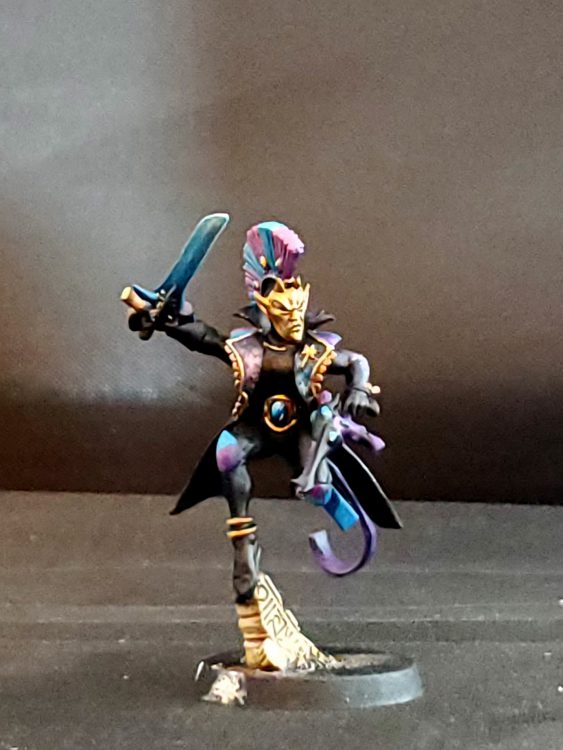
Lead Player
The Leader operative, this is a standard player with an extra wound and the Performance Lead ability. Performance Lead allows you to, once per battle, during the Strategy phase, change the Allegory in play and change the operative who benefits from the pivotal role if you want. Being able to do this is is incredibly important, so keep this model alive. The Lead Player still gets improved BS (2+) when shooting ranged weapons and so while you can only take one fusion pistol or neuro disruptor, he’s a good option for either.
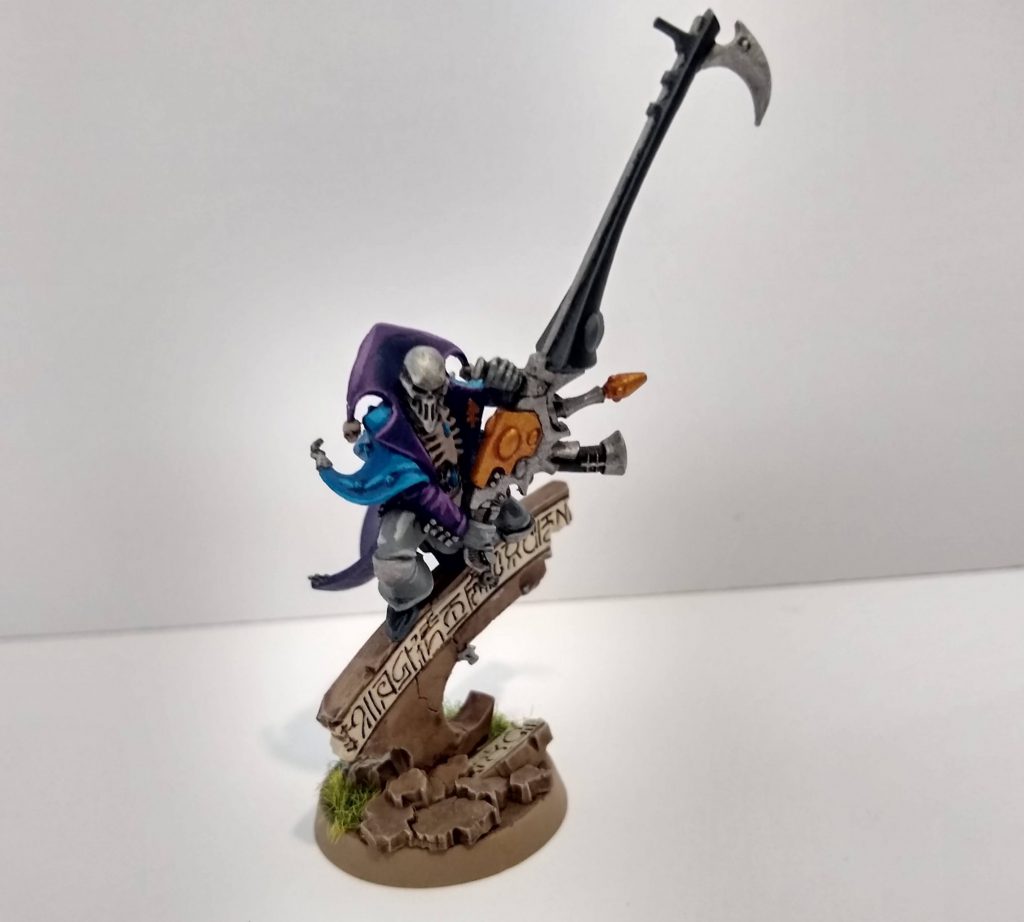
Death Jester
Well turns out Harlequins get some great shooting now, and the Death Jester is the key part of that. Death Jesters only have one weapon option, and it’s the Shrieker Cannon, which by the way is incredible. 5 shots hitting on a 3+ with 4/5 damage, Rending on crits and the Fusillade, Heavy, and Humbling Cruelty rules. Humbling Cruelty forces any target that takes damage from the cannon to act as Injured for the rest of the Turning Point, and the cannon’s blade acts as a Reap 2 weapon, albeit one that only has 4 dice and 3/4 damage. The real money here however is the Shrieking Harvest (2 AP) Shoot action, which turns the gun into an infinite range flamer with 2″ torrent, letting you absolutely murder bunched-up models.
The Death Jester is basically a compulsory choice to get on a Vantage Point or objective in the backfield and murder anything that pokes its head out of cover. The only downside is that the Shrieker Cannon is Heavy, but there is a 1EP piece of equipment that removes that particular penalty – this is also a compulsory purchase.
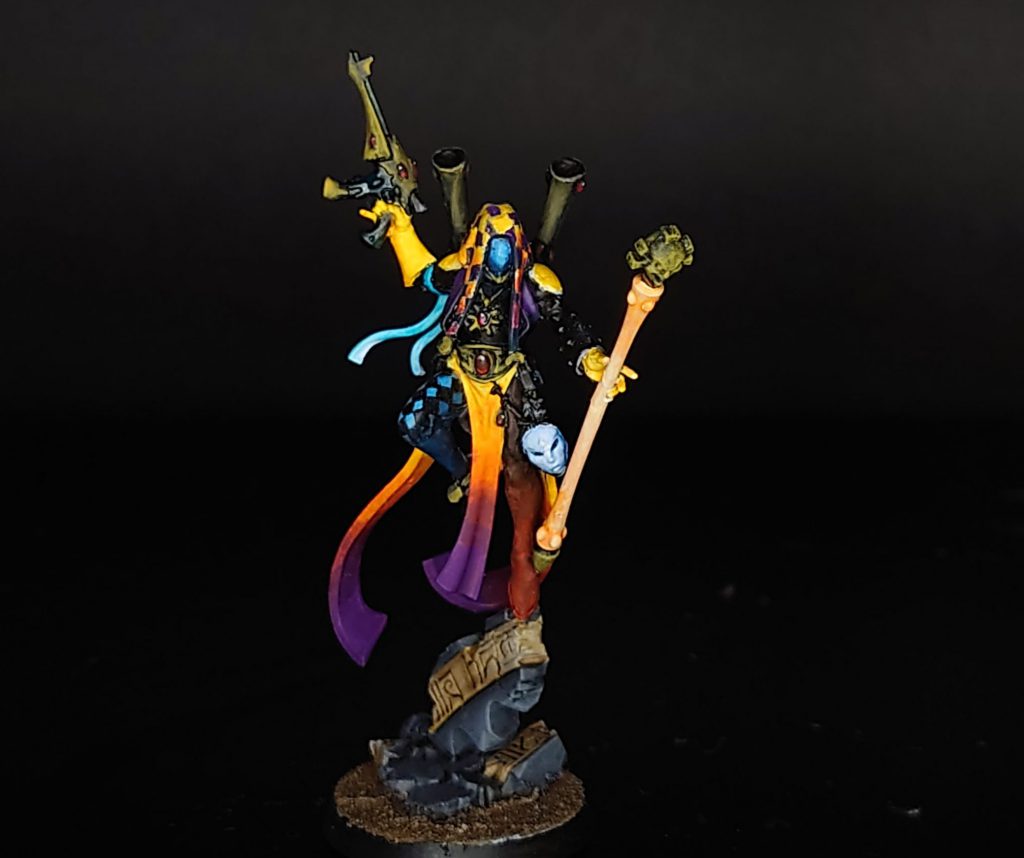
Shadowseer
The other new operative for Harlequins, the Shadowseer now means that Troupes get psychic powers as well, though they’re a bit more situational compared to just stabbing people in the face. Shadowseers can perform the Manifest Psychic Power (1 AP) action twice per per Turning Point, but can’t do so while within Engagement Range. They also come with Hallucinogen Grenades, which can reduce the APL of enemies and deal them a mortal wound.
Harlequins Psychic Powers
There are three Harlequins Psychic Powers Shadowseers have access to; Veil of Tears gives a friendly operative cover and prevents them from being the target of a Charge action (though an enemy model may still engage them if they are engaging another friendly model as well). This stops an enemy charging you, but lets you charge them. Fog of Dreams lets you change an enemy’s Group Activation characteristic to 1 and prevent it from acting until the rest of its team have activated or until D6 operatives have acted (whichever happens first). Mirror of Minds also makes the jump to Kill Team here, and has you pick a target in line of sight, then both you and your opponent roll 6D6. For every matching pair of dice (triples do nothing extra), that target takes a mortal wound. This is going to reliably get you 3 mortal wounds, and is a nasty way to get some extra damage.
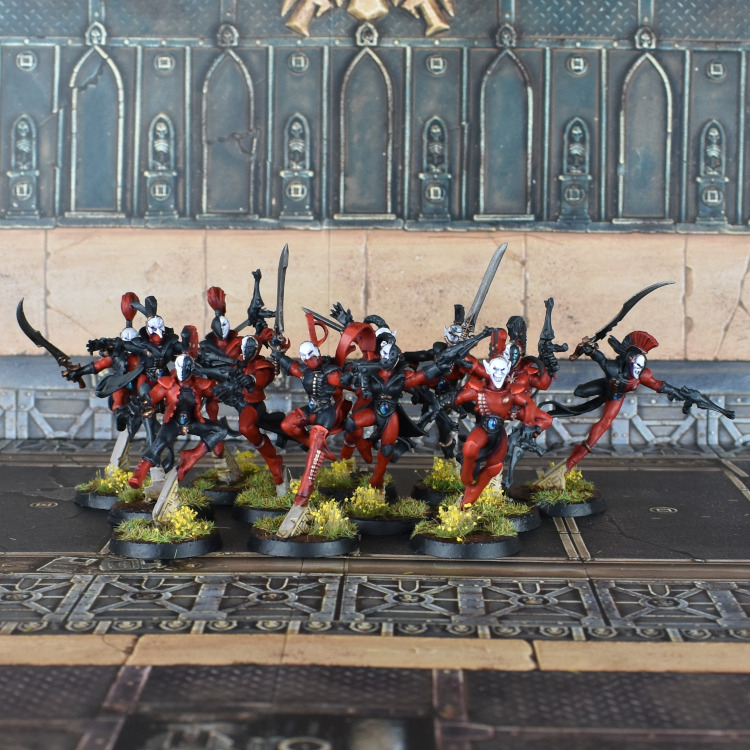
Player
Players are the bread and butter of the team, able to bounce around the map and hit incredibly hard in melee. You could write half an essay about which weapons to pick for close combat, and they all have good points. You’ll want to have options that include the Neuro Disruptor and Fusion pistol on your roster, and if you give one to your Troupe Leader you’ll want to have the other lined up among your Players.
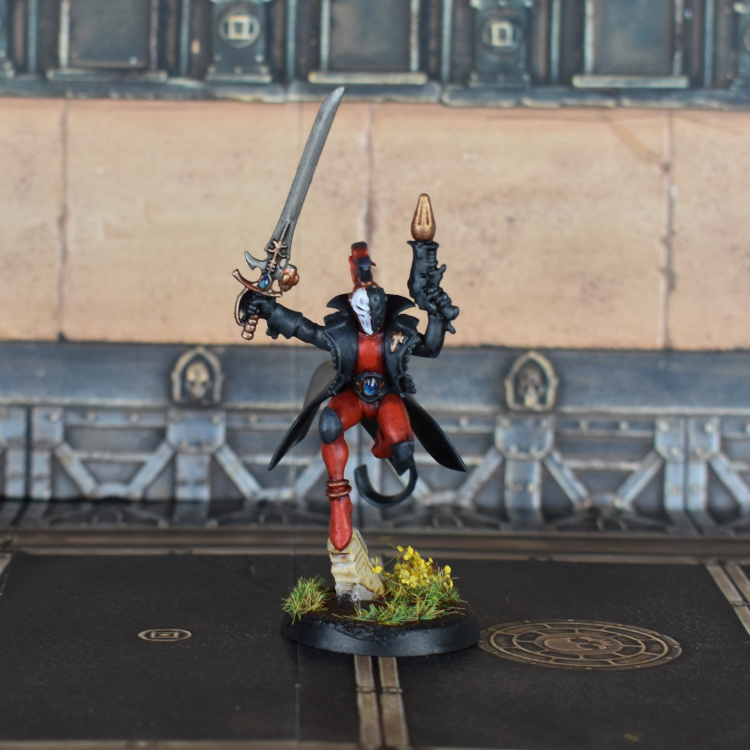
Equipment
Void-Dancer Troupes basically have exactly the same equipment options they had before, though there are several very good options in here. The one new option is also essentially a compulsory pick, as we’ve already mentioned: The Support Grip, which goes on a Death Jester and trades out their Heavy rule for Cumbersome, limiting them to 3⬤ of movement in an activation in which it shoots the weapon. After that your options are much less compulsory, though certainly familiar. The Pure Psychocyrstals* are back, enabling you to upgrade a Neuro Disruptor to have the Lethal 5+ special rule, making it more likely you’ll score the Stun result and get the extra damage. Likewise, the Supertensile Monofilament Wire (3 EP) lets you add 1 to the normal damage of a kiss weapon, taking it to 4/7.
And if you just want to watch the world burn and fill out your roster, the Shrieker Toxin Rounds return here, letting you upgrade either a shuriken pistol or shrieker cannon to do 1 mortal wound on a crit, and just hand those out to multiple operatives.
Ploys
Void-Dancer Troupes have a larger list of ploys to choose from, with four each this time around, and unlike with Equipment, several of these are new.
Strategic Ploys
There are four Strategic Ploys here, and the two that return are Domino Field (which no longer requires your target be more than ⬟ away), and while Prismatic Blur is back in name, its text has changed: Now if you make a normal move, fall back, or charge, you become a prismatic blur and can either re-roll defence dice against shooting attacks or turn your opponent’s normal hits against you in melee into parries on a 4+, making you an absolute terror to damage.
The other two strategic ploys are also very good: Between Colours allows you to perform shoot actions during your move actions, i.e. at any point between increments of movement, and Cegorach’s Jest lets you turn opponents’ hits into parries once per combat by rolling a D6 and getting equal to or less than their weapon skill.
Tactical Ploys
Again we go from three to four options and again, we have changed effects. The Curtain Falls and Murderous Entrance haven’t changed, but Hero’s Path is gone and instead we have Capricious Role, which lets an operative perform Dash and Charge actions while within Engagement range of an enemy, and Ruthless Derision, which lets you re-roll any or all attack dice for a shooting attack made after Falling Back.
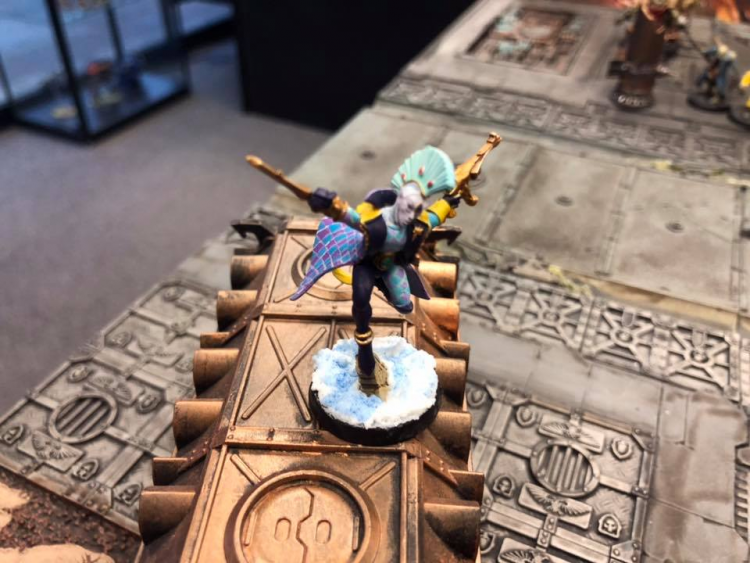
Tac Ops
Finally there are three Tac Ops that Void-Dancer Troupes gain, giving them additional tactical flexibility. Mythic Play is revealed at the start of the game and rewards you for getting a performance tally of 4+ and 6+. Hero’s Path has shifted over to here from the Tactical Ploys, and now has you single out an operative when they down an enemy operative. If they lead your team in killing enemy operatives and end up in your opponent’s DZ, you score. And Grand Act has you keep a separate, secret tally of each time you complete a performance effect (it doesn’t have to be the one for the active Allegory). This is by far the trickiest of the set, and when you get your tally to 5, you score VP.
Closing Thoughts
On the whole, while Harlequins have lost a pair of fusion pistols per team, the added boost they’ve gained from Death Jesters and Shadowseers feels like it should more than compensate for the loss. They also make building teams much easier, since you’ll only need a small number of additional options to cover your Players and Lead Player and their potential options, figuring out when you want a fusion pistol on the lead player and when you don’t. Your optimal activation will be one where you can Charge, Fight, and then Shoot, and down two operatives in the process.
Otherwise, we expect Void-Dancer Troupes to still play similarly to older Harlequins, where teams will focus on blades for lower-wound opponents and caresses against operatives with 10+ wounds. They’ll have more ranged support now thanks to the Death Jester, and the Shadowseer will likely be able to make up some of the lost ranged effectiveness by throwing out mortal wounds with Mirror of Minds.
The real question is whether this is a lateral move for Harlequins or one that pushes them over the top and into “problem” status in the meta. Hopefully it’s the former, though GW’s recent approach to Kill Team balance gives us a lot of confidence that if the new Void-Dancer team is too good, we’ll see a correction sooner than later.
Have any questions or feedback? Drop us a note in the comments below or email us at contact@goonhammer.com.
